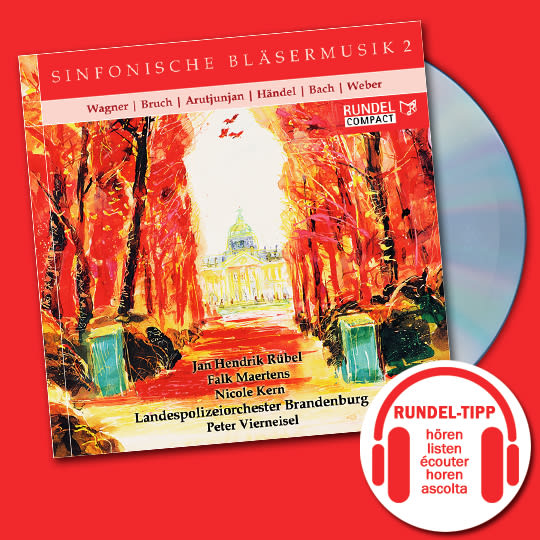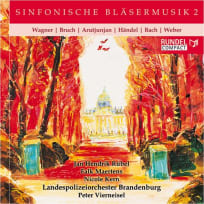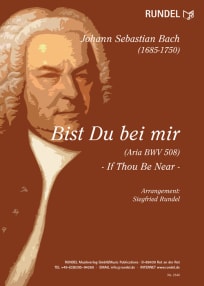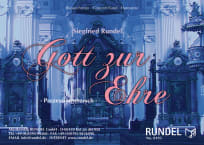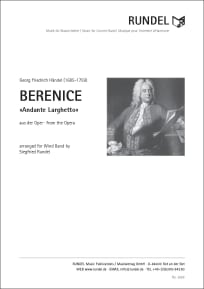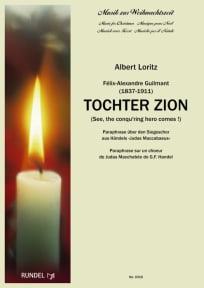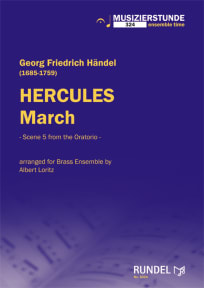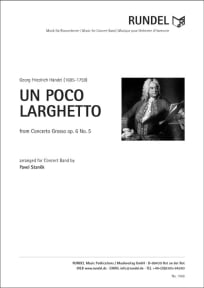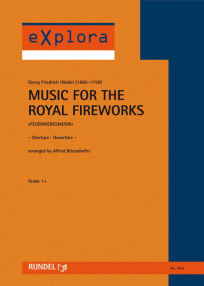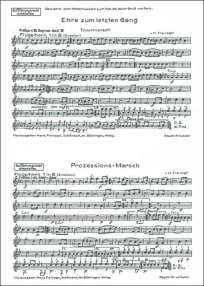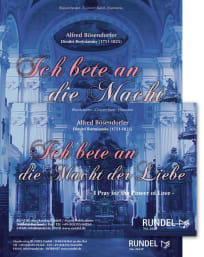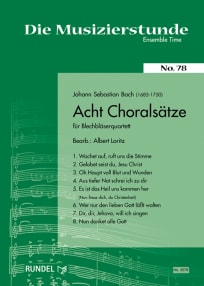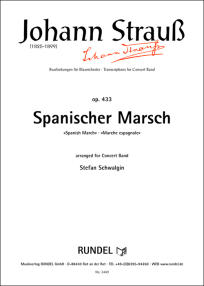Banda (Orchestra di fiati)
Trauermarsch aus "Saul"
Dead March from Saul
aus dem Oratorium Saul (HWV 53)
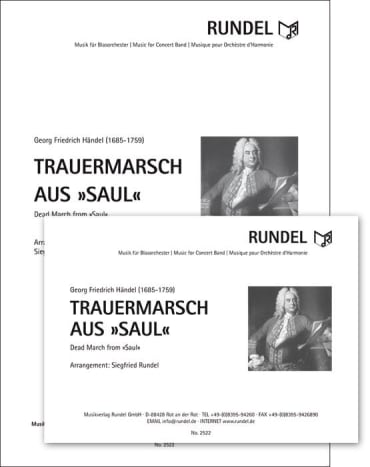
Banda (Orchestra di fiati)
Trauermarsch aus "Saul"
Dead March from Saul
aus dem Oratorium Saul (HWV 53)
Compositore
Arrangiatore
Genere
Durata
00:02:41
Difficoltà
Mittelstufe
Editore
Rundel
Formato
A5 orizzontale
Info
Partitura completa + Parti
Numero d'edizione
MVSR2522
Data di pubblicazione
2006
Info
Although Handel originated from the same region of Central Germany as his great contemporary Bach, the two could not be more different in their creative activities. Bach remained rooted mainly in his native Thurinigia and Saxony and in the traditions of Protestant church music, while Handel went forth into the musical world of his time and was influenced particularly by developments in opera during his lengthy sojourns in Italy. Handel’s “Saul” belongs to a series of scenic oratorios based on Old Testament texts which are almost operatic in their drama. The tense contrast between the ageing Saul and the “newcomer” David can hardly be more impressively presented. Murder, intrigue, love and the all-encompassing worship of God by the Israelites are the elements which determine the plot. The “Dead March” forms the central part of the third act and the climax of the entire oratorio. Saul has a foreboding that God has abandoned him because of his disobedience. Because Saul spared the Amalekites (a tribe in the land of Canaan), God has taken his kingdom from him and given it to David. After the battle an Amalekite from the Israelite camp comes to David and tells him of the deaths of Saul and Jonathan. Saul unsuccessfully tried to take his own life and was then slain by the Amalekites. At this point in the oratorio the Dead March is played, a piece whose almost static character impressively reflects the numbness and shock of the Israelites. Due to his interesting instrumentation, Handel’s musical language is colourful, easy to remember and popular. He has no inhibitions about adopting melodies which can be found among the common people.
Siegfried Rundel has succeeded in producing a dignified arrangement of the Dead March from the oratorio “Saul” for wind ensemble. Here Handel is given a further opportunity to display the diversity of his moving music in performance.
Siegfried Rundel has succeeded in producing a dignified arrangement of the Dead March from the oratorio “Saul” for wind ensemble. Here Handel is given a further opportunity to display the diversity of his moving music in performance.
Parole
Arrangiamento / Trascrizione
Chiesa
Chiesa cattolica
Chiesa evangelica
Dio
Formato Librettabile
Lutto / Morte / Morire
Marcia
Musica classica
Musica funebre
Onoranza funebre
Oratorio
Processione
RUNDEL YouTube Canal
Trascrizioni orchestrali / classiche
triste
Ascolta e leggi dal canale YouTube di Rundel
RUNDEL VIDEO
Trauermarsch aus "Saul" - Dead March from Saul
Notes available at:
https://www.rundel.de/it/
aus dem Oratorium Saul (HWV 53)
Difficoltà: Grade 2.5 / Stufe B-C / Mittelstufe
Compositore: Händel, Georg Friedrich
Arrangiatore: Rundel, Siegfried
Genere: Classica, Trascrizioni classiche, Marcia concerto, Marcia, Marcia di processione, Musica funebre
Durata: 00:02:41
Editore: Rundel
Formato: A5 orizzontale
Info: Partitura completa + Parti
Rundel Numero d'edizione: MVSR2522
Data di pubblicazione: 2006
https://www.rundel.de/it/
aus dem Oratorium Saul (HWV 53)
Difficoltà: Grade 2.5 / Stufe B-C / Mittelstufe
Compositore: Händel, Georg Friedrich
Arrangiatore: Rundel, Siegfried
Genere: Classica, Trascrizioni classiche, Marcia concerto, Marcia, Marcia di processione, Musica funebre
Durata: 00:02:41
Editore: Rundel
Formato: A5 orizzontale
Info: Partitura completa + Parti
Rundel Numero d'edizione: MVSR2522
Data di pubblicazione: 2006

